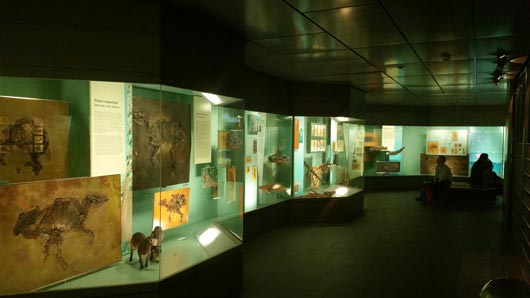Darwinius masillae – Missing Link Debate Hots Up
Earlier this year, a paper published on the discovery of an ancient primate fossil from the Messel shales, a World Heritage site in Germany, attracted a great deal of publicity. It was heralded as an important discovery, the earliest example of a primate whose descendants were to become the higher apes and eventually the hominids. The species was named Darwininus masillae.
To read an article on the discovery of D. masillae: The Relationship between Hominids and Lemurs – Darwinius.
Darwinius masillae
The 47-million-year-old fossil, regarded as “humanity’s long lost ancestor” and publicised as “the first link in human evolution”, was unveiled earlier this year. The fossil was nicknamed “Ida” by Dr Jorn Hurum, the scientist who revealed the fossil to the world, Ida is the name of the doctor’s daughter. However, other scientists have refuted the claim that this fossil represents an early ancestor of the line of apes that were to lead to humans.
There was even a documentary on the discovery narrated by Sir David Attenborough and shown at peak viewing time on the BBC. Dr Hurum and his team identified “Ida” as having lived at around the time the primates were splitting into two distinct branches, the Haplorhines, which includes the apes and a second group which includes the lemurs, lorises and pottos (Strepsirrhines).
Lemur-like Characteristics
Darwinius excited palaeontologists as this fossil lacked lemur-like characteristics, no fused teeth in the middle of the lower jaw and no grooming claw, suggesting that this material represented the newly developing “human branch” of primates. Dr Hurum reported this fossil as being the “first link in human evolution”, guaranteeing a great deal of media interest.
However, the significance of “Ida” is being called into doubt by a paper that will be published in the scientific magazine “Nature”. A team of scientists, led by D. Erik Seiffert from Stony Brook University in New York, examined another primate fossil, a 37-million-year-old fossil very closely related to “Ida”. Dr Seiffert and his team have stated that both mammals belong to a group called the Adapoids, extinct primates that are believed not to be related to Hominids.
Dr Seiffert stated:
“Phylogenetic analysis of over 300 characteristics across 117 living and extinct primates reveals that the Adapoids are not ancestors to higher primates but rather a separate lineage with no known descendants”.
He went on to add:
“This means that the features they share with higher primates, such as the loss of the upper and lower second premolar, must have evolved independently.”
Some Examples of Messel Shale Fossils

The atmospheric Messel gallery at the Senckenberg Museum (Frankfurt). Picture credit: Everything Dinosaur.
Picture credit: Everything Dinosaur
This new paper is a little embarrassing considering the amount of publicity the unveiling of Darwinius generated. It questions the main findings of the earlier discovery. It seems that the importance of the Darwinius fossil will be debated for many years to come.
Visit Everything Dinosaur’s website for prehistoric animal figures: Prehistoric Animal Figures.






Nice to see the 'Ida' PR job falling apart.
I watched the 'Link'documentary recently, initially very impressed and then a couple of hours later, considerable doubts began to raise their head:
1. Publication by Media… I'm sure there's plenty of palaeontologists who note the opening media overture side tracking the rigours of peer review or publication in 'Nature' with considerable amusement!
2. Seiffert mentions: “Phylogenetic analysis of over 300 characteristics across 117 living and extinct primates…” in his study. According to the documentary the Ida team 'world experts' went across the Atlantic to the zoo to have a look at a loris…! Presumably they don't have primate dentition charts in Norway?
3. The 'world experts' spent a considerable time- a year according to the documentary looking for 'a bone' that would prove the missing link. Surprise surprise they found one… A bone…Just one?? What kind of semi educated clod hoppers are these people?
Thankfully Seiffert introduces that teeny element of morphological process ie looking at 117 other primate bodies, y'know the results of 150 years of scientific research in the subject. […going to the bl**dy zoo indeed!]
4. The sheer unlikelihood of finding a perfect and complete common ancestor fossil of the Haplorhines and Strepsirrhines, when there are divergent and parallel evolution characteristics probably present in hundreds of species adaptations over 20 million years or so.
The more you think about it, the more the 'Ida' team appear from their documentary as amateurish low grade academics after some cheap fame- a product of the prevalent TV culture. Sit back; watch them crash and burn, and praise the process of Peer Review as it wrecks a slick media PR exercise!